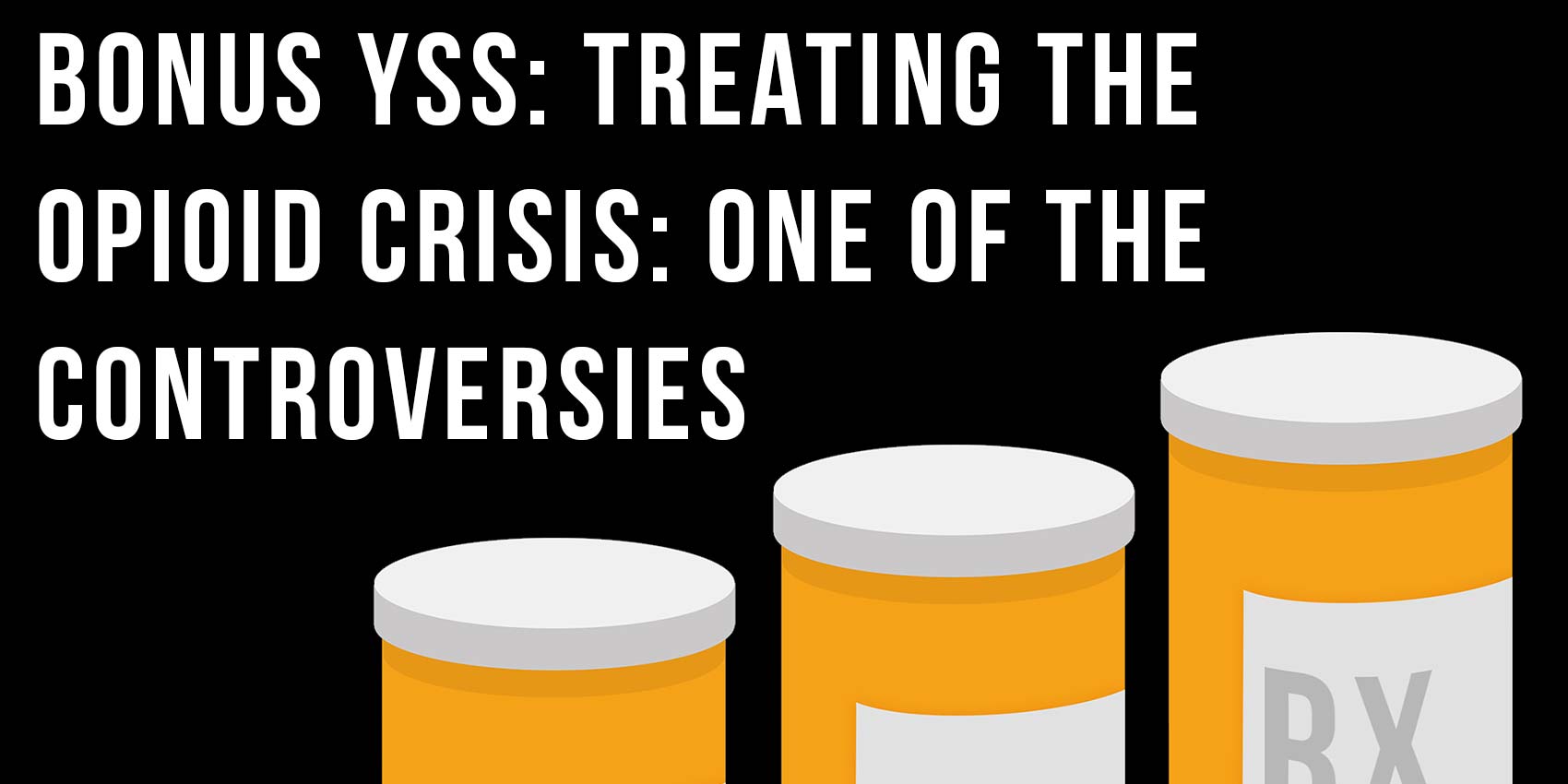31 Aug Bonus YSS: Treating the opioid crisis: one of the controversies

Wait? What? How could there be a controversy around a crisis? Doesn’t everyone just want to help and make things better?
Most people do want the crisis to end but the controversy lies in how the United Staes has traditionally handled drug crimes.
Back in the 1980’s, politicians declared a “War on Drugs,” and increased the penalties for possessing or selling drugs (the Anti-Drug Abuse Act of 1986 was enacted). Many drug crimes became felonies—which means that the minimum sentence would be imprisonment. This led to an EXPLOSION in the US prison population and in particular to the arrest and imprisonment of black men and women.
However, statistics and research demonstrates that black men and women are not the largest users of drugs (white college men and women are). How then is it possible that more black men and women ended up in jail? To explain that in detail is not possible in this sub-post (but if you want to read about it, it is detailed in the book The New Jim Crow), but the bottom line is that racist practices were employed by the US political and justice system. (Another source available online that also supports this claim can be found here: https://storage.googleapis.com/vera-web-assets/downloads/Publications/for-the-record-unjust-burden/legacy_downloads/for-the-record-unjust-burden-racial-disparities.pdf)
As an example, in the 1980’s the target of many news stories and therefore drug raids was crack, a cheaper form of cocaine. The penalty for crack was imprisonment however, even though cocaine is basically the same drug with the same risks, the penalty for cocaine was not. Why the difference? Many believe it was because crack use was higher among poor, minority populations because it was cheaper than cocaine, the drug of choice for upper-middle class drug users. As a result, thousands of black men and women were sent to jail for essentially the same crime as cocaine use, but cocaine users did not receive the same punishment. Once in the prison system, these people’s lives were changed forever and a cycle of incarceration began (meaning once in the system it was very hard to return to life free of the prison system because being labeled a felon keeps you from many jobs, housing and even government assistance opportunities).
Many politicians saw the 1986 Anti-Drug Abuse Act for what it was—discriminatory. Finally, in 2010, the Fair Sentencing Act was passed changing many of the details of the 1986 law, mainly that for a 5 year conviction you didn’t have to have 100 times the amount of cocaine to equal that of the crack felony; now you need only 18 times the amount of cocaine to equal a crack felony. (Yes, you read that right… still not fair.)
(Source: https://www.criminaldefenselawyer.com/resources/crack-vrs-powder-cocaine-one-drug-two-penalties.htm)
So how does this relate to the opioid crisis? Well, when the “crack crisis” happened the response from the government was to punish—to send people to prison. Today, with the “opioid crisis” people are urging a more compassionate approach, such as methadone treatment and rehabilitation centers. Why the difference in approach? Well, that’s the controversy. Many people believe it is race-based: the opioid crisis is affecting all classes, but in particular middle to upper class citizens—doctors, lawyers, bankers, nurses, businessmen and businesswomen—i.e., white people.

DID YOU KNOW? It costs $33,000 per year to incarcerate someone in the US. It costs $5,000-7,000 per person for methadone treatment.
Other countries do not criminalize drug crimes the way the US has in the past, and indeed, the US has the highest prison population IN THE WORLD—a direct result of the War on Drugs that incarcerated black people at much higher rates than white people. Hence, many people today are speaking up about the injustices that have happened to black people as a result of the War on Drugs and many are seeking changes in the law and policing practices.
So, the controversy surrounds just how the crack and opioid crises were/are being handled. In short, many people support compassionately approaching the opioid crisis, but they want the difference in the approaches to be laid bare. Through such knowledge, we can also begin to tackle the imprisonment crisis happening in this country.




Answer the post question here
What's being said